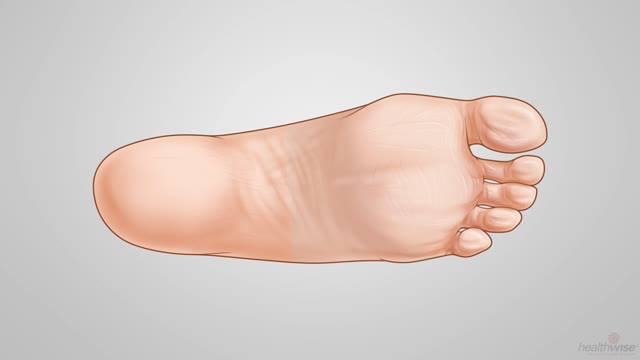Checklist for Shoes and Socks That Fit Well
Topic Overview
If your feet require specially designed shoes, ask your insurance plan about covering the cost of the shoes. Medicare will cover foot exams and special (orthotic) shoes or shoe inserts. Some medical supply shops specialize in designing custom-fitted shoes for people with diabetes who have abnormally shaped feet or pressure injuries on their feet.
Shoes
Good shoes should fit well. To ensure that your shoes fit well:
- Buy shoes in the evening when your feet are more likely to be swollen. This will give you a better fit throughout the day.
- Tell the store clerk that you have diabetes. (If the clerk doesn’t know why that matters, find a store with a clerk who does know.)
- Look for shoes that have roomy toe boxes (the space around the toes). Shoes with roomy toe boxes (not pointed toes) will help prevent bunions and blisters.
- Try on shoes wearing the kind of socks you will usually wear with the shoes.
Good shoes should be made of comfortable materials. Good shoes are made of materials that are flexible and breathable (don’t make your feet sweat).
- Athletic shoes are usually made of comfortable materials.
- Soft, flexible leather is a good shoe material.
- Wear insoles if there is room in your shoes for them.
Good shoes should protect your feet.
- Do not buy shoes with plastic tops or uppers or sandals that have straps between the toes. Avoid plastic shoes in general. They may rub your feet and cause blisters. They may also make your feet sweat.
- Do not wear sandals. Sandals don’t protect your toes and feet from scrapes or cuts.
- Do not buy shoes with very thin soles. Thin soles can be easily punctured. They also do not protect your feet from hot pavement or cold weather.
- Do not go barefoot, even when you are indoors.
Socks
Good socks should protect your feet.
- Socks should be cushioned. The best socks are thick and cushioned.
- Cotton or wool socks are better than polyester or nylon socks.
- Socks without seams are best because seams often irritate toes or bony areas of the feet. If you wear socks with seams, position the seam before putting on your shoes, and wear shoes that do not rub your toes.
- Stockings or nylons need to fit loosely around your toes to leave room for movement when walking. Put them on, then pull at the toes to create some wiggle room. Do not wear short stockings (thigh-highs or knee-highs) or garters because these can interfere with your blood circulation.
When you wear new shoes, check your feet for pressure spots, redness, or blisters twice a day. New shoes should be broken in slowly. The first week, wear your new shoes only 1 to 2 hours a day. The second week, wear your new shoes 2 to 3 hours a day. Increase the amount of time you wear the new shoes each week. It is especially important to break in leather shoes slowly.
Health Tools
Health Tools help you make wise health decisions or take action to improve your health.
Current as of: April 16, 2019
Author: Healthwise Staff
Medical Review:E. Gregory Thompson MD – Internal Medicine & Adam Husney MD – Family Medicine & Kathleen Romito MD – Family Medicine & David C.W. Lau MD, PhD, FRCPC – Endocrinology
This information does not replace the advice of a doctor. Healthwise, Incorporated, disclaims any warranty or liability for your use of this information. Your use of this information means that you agree to the Terms of Use. Learn how we develop our content.


